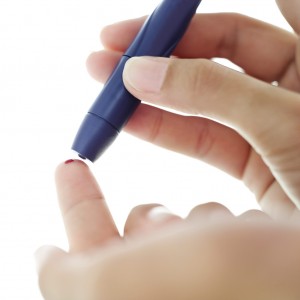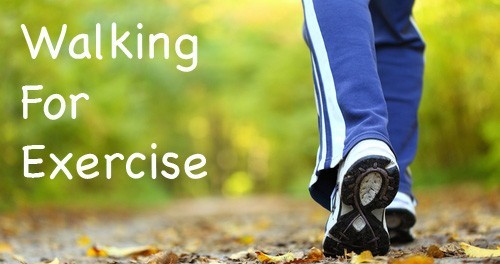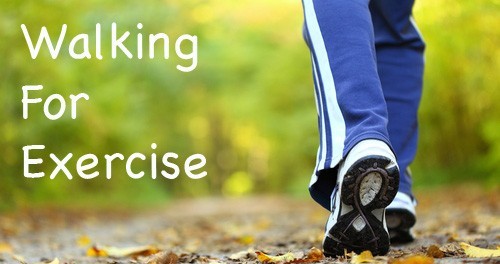Walk Talk Series
Day 61 – Walking and Diabetes
Affirmation of the Day
I face today’s difficulties with strength and wisdom. Troubles melt away and are replaced with peace and contentment.
Today’s Walk:
- 45-80 minute walk in the fat-burning zone at 60-70% of your maximum heart rate
- Warm up with 5 minutes at a very easy pace
- Find a safe spot with a wall or pole to do a 5 minute easy stretching routine
- Now resume your walk at a comfortable pace
- End with 5 minutes of gentle stretching
Advanced walkers: Economy Walk
Exercise: Upper Body Exercises
Walking and Diabetes
Walking is one of the most popular and widely recommended forms of physical activity for people with diabetes. It’s easy, relaxing and can be done practically anywhere. Most important, it’s highly effective at controlling blood glucose levels. Still, there are important things for people with diabetes to consider before taking off.
By walking every day, for 30 minutes to an hour, diabetics can reap the following benefits:
- Improved glucose control. Exercise helps muscles absorb blood sugar, preventing it from building up in the bloodstream. This effect can last for hours or even days, but it’s not permanent. That’s why walking regularly is essential for continued blood glucose control.
- Better cardiovascular fitness. Because people with diabetes are at increased risk for heart disease, this is an important benefit.
- Weight control. Regular walking burns calories; this can help control weight, which in turn can reduce health risks.
Walk Your Way to Improved Heath and Save Money
Walking or doing other aerobic exercise for 38 minutes – about 2.2 miles or 4400 steps – showed a significant effect for those with diabetes, even if they didn’t lose weight. They improved their hemoglobin A1C by 0.4%, reduced their risk of heart disease, and improved their cholesterol and triglyceride levels. They saved $288 a year in health care costs.
Walkers who logged 10,000 steps per day – almost 90 minutes or 5 miles – saw the biggest benefit. The number of walkers with diabetes who needed insulin therapy dropped by 25%, and those on insulin therapy reduced their dosage by an average 11 units per day. They had great improvement in hemoglobin A1C levels of 1.1%, improved cholesterol, triglycerides, blood pressure, and reduced risk of heart disease. They reduced their medical costs by over $1200 per year.
 Stay on the Couch – Get Sick and Lose Money
Stay on the Couch – Get Sick and Lose Money
Those who stayed on the couch, saw their health care costs go up by over $500 in the two-year study period. Their insulin use went up, as did cholesterol, triglycerides, and blood pressure. There is a huge cost in failing to walk and exercise, especially for those with diabetes.
It’s Not Too Late to Take the First Step
Exercise and walking have also been shown to reduce the risks of developing Type II diabetes. Whether you have diabetes or not, it is never too soon or too late to begin a walking or exercise program.
What You Need to Know Before Getting Started
Getting the Go-ahead from a Health Care Provider
First, it’s important for a diabetic to get the OK from a health care provider for any new exercise program to make sure that the patient is fit enough to increase his or her activity levels. A health care specialist can also inform the patient of special precautions to take based on what type of diabetes he or she has. Other factors to consider include medications being taken, one’s current fitness state, glucose levels and other factors.
Walking and Diabetic Foot Care
Foot health is particularly important for anyone with diabetes, so the input of a podiatrist may be especially useful if you’re considering a walking program. Blisters, abrasions and breaks in the skin of the feet are often hard to detect since foot numbness is one symptom of diabetes. These injuries are slow to heal and prone to infection, since another symptom of diabetes is reduced blood flow in the small blood vessels of the extremities. A podiatrist or other health care specialist can recommend alternative forms of exercise if a foot condition makes walking difficult.
 The Importance of Shoes and Socks
The Importance of Shoes and Socks
It’s not necessary to spend a lot of money on walking shoes, but there are a few things to keep in mind:
- The shoes need to fit comfortably, with plenty of room in the toe area. They should not rub at the heel. Some walking shoes include an extra pair of eyelets close to your ankle. Lacing these may help prevent heel friction.
- Walking shoes are different from running shoes. Walking shoes have flatter, broader soles, which help improve balance.
- The staff at a “walking store,” an increasingly popular type of specialty retailer, is usually well trained at fitting walking shoes.
- Don’t forget socks. Cotton socks can bunch and retain moisture. Check out newer synthetic fabrics, such as CoolMax and Dri-Fit, that wick moisture away from the skin.
Special Considerations
- Always wear a diabetes ID bracelet and carry glucose pills, hard candy or sweet snacks in case blood sugar drops.
- Follow a doctor’s orders regarding when to check blood glucose levels. Diabetics may need to take readings before, after and perhaps even during their exercise routine.
- Be sure to do a foot check after each walking session and check for cuts, abrasions and blisters.



